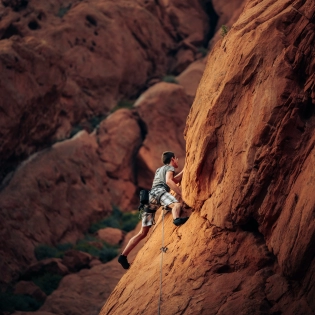I put a vitamin E cream on my hands before I fall asleep. I feel it really helps after sessions that leave me with pulsating red fingertips with little to no skin. The one I use is from Jason, its a 25,000 IU cream, but there are also oils with 75,000 IU, I haven't tried that yet though.
Leaving the cream on overnight does help quite noticeably. It doesn't completely heal the skin after one night, but usually after a second night of doing this I can climb again the next day.
As long as you feel that they are the right fit for you, then yes. I remember when I bought my first real pair of climbing shoes after my beginner shoes, I tried downsizing as everyone had told me I have to, but even the salesman asked me to not downsize because the it just didn't fit me properly. What ended up being a "performance" fit for me was actually my street shoe size. This is in spite of everyone telling me I have to downsize to the smallest size that I can stick my feet in, regardless of the pain. So as long as you don't listen to that advice and you get what ever you can climb in without terrible pain, or without any pain at all, it should be fine.
I like training static and slow movements for climbing. I feel it translates the best to actual climbing.
I usually find a pull up bar and just do a lot of different grip width variations. Some narrow grip, some shoulder width, and some as wide as I can. All of them are done slowly and controlled, so I don't jerk myself up. I start from a complete dead hang position, slowly pull myself up, and even more slowly lower myself back down.
I also try to pull myself further up, so that I am in between a regular pull up and muscle up.
Training one arms is probably my favorite though, it also really requires very minimal gear, basically just a pull up bar.
Anything body weight and slow movement helps me, so pull ups, push ups, handstands, etc.




